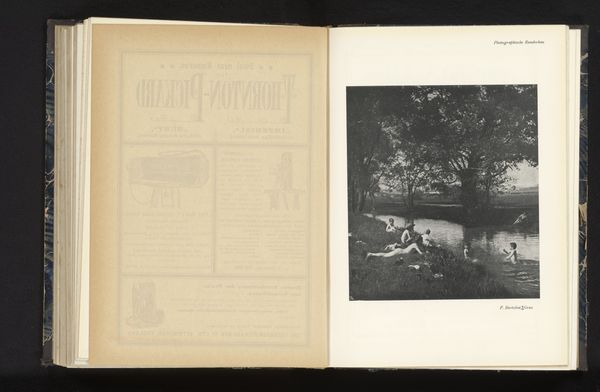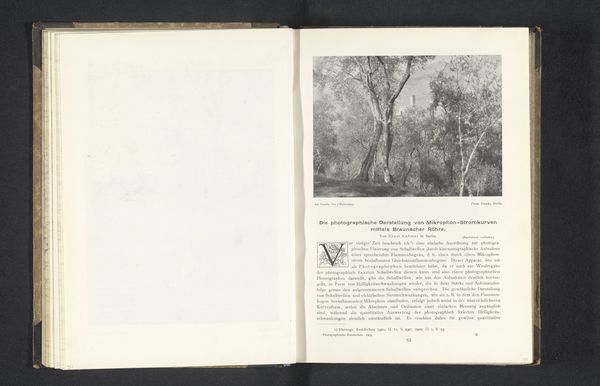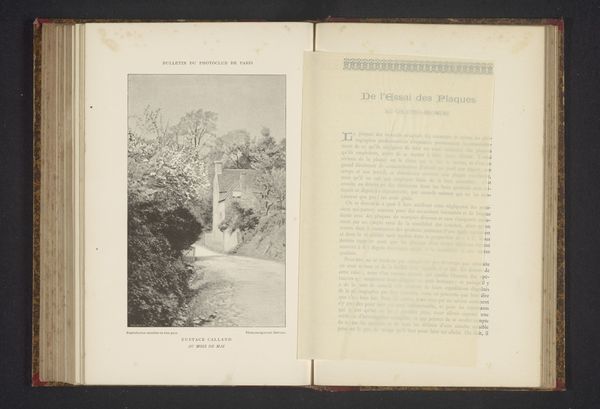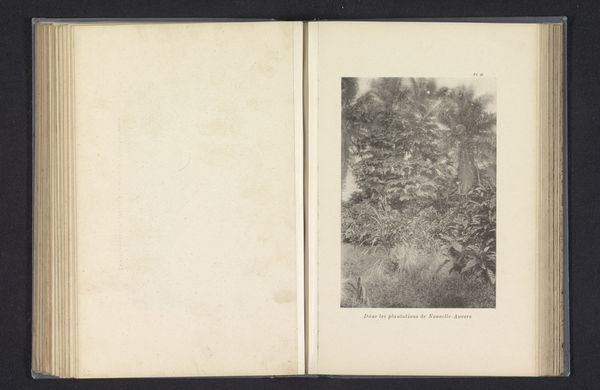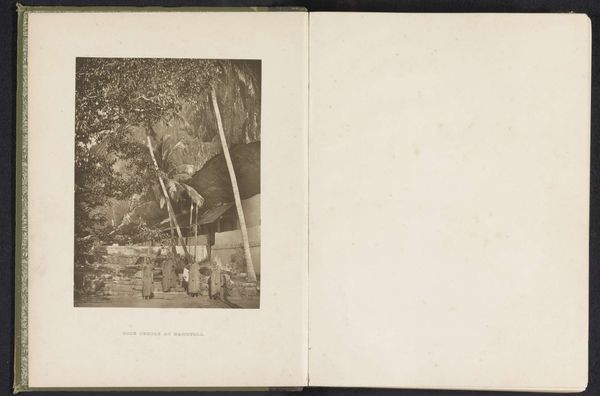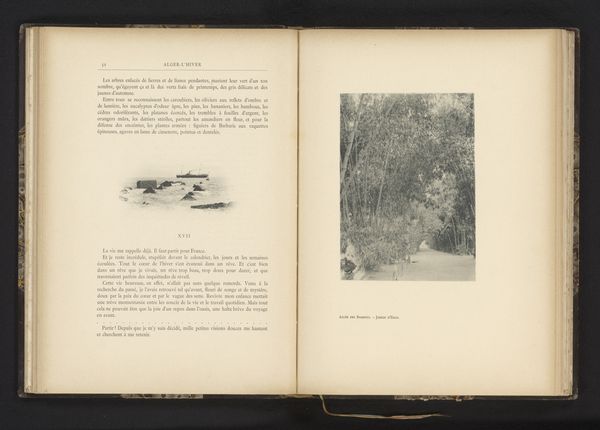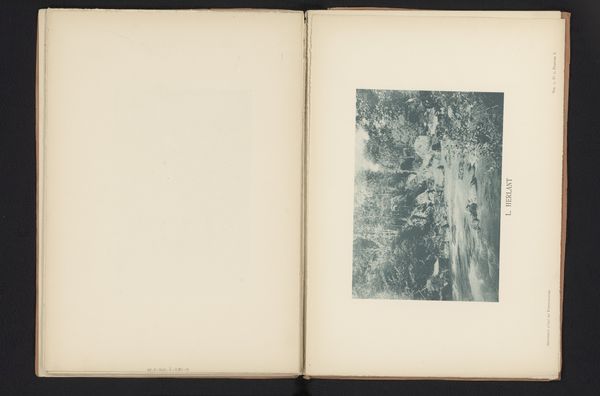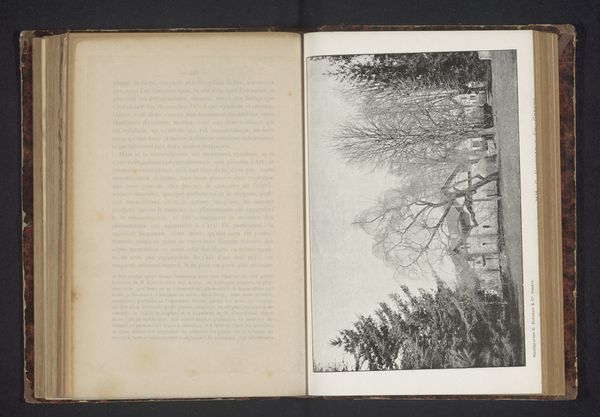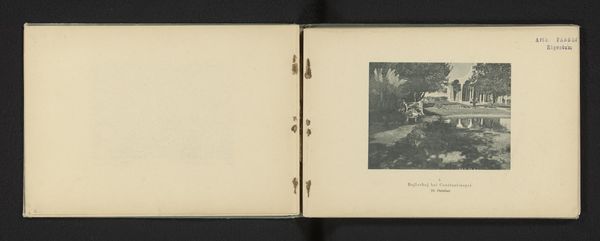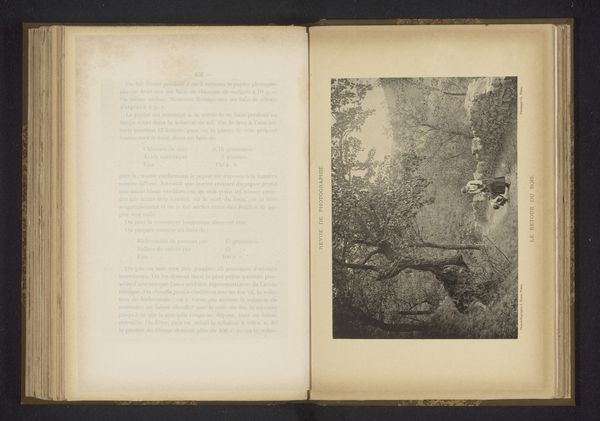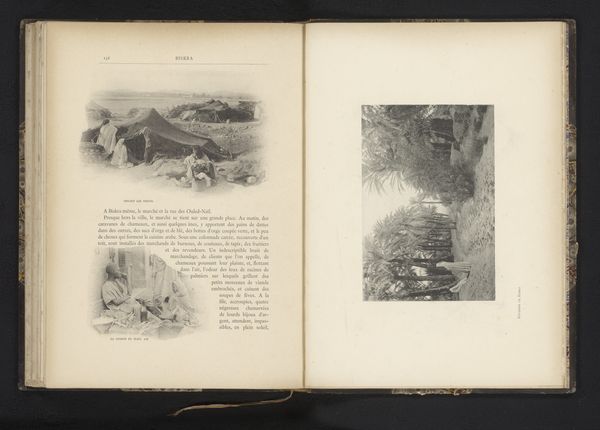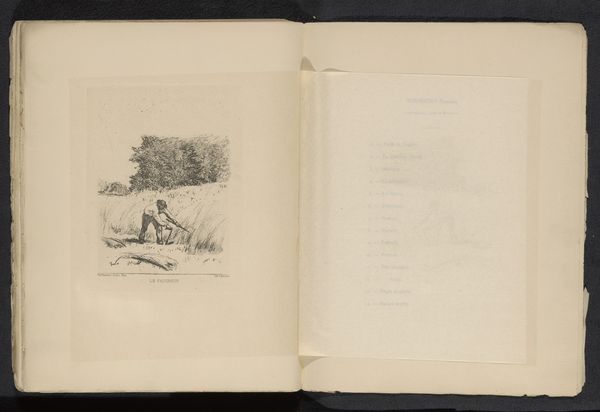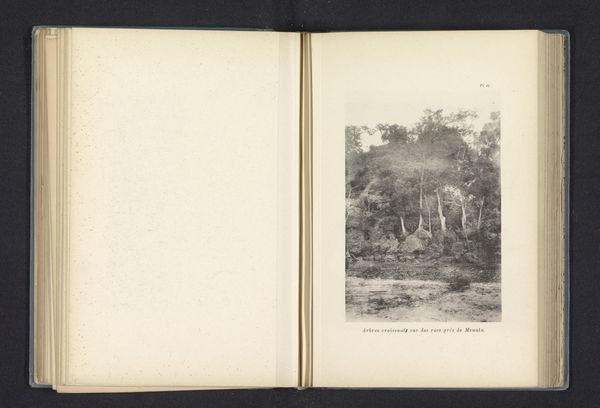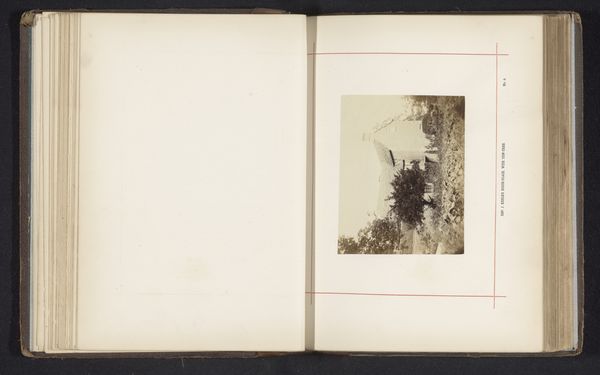
print, photography
#
pictorialism
# print
#
landscape
#
photography
#
road
#
forest
Dimensions: height 178 mm, width 139 mm
Copyright: Rijks Museum: Open Domain
Curator: This photogravure by J Hove, entitled "Gezicht op een pad door het bos" or "View of a Path through the Forest", dates to before 1902. What are your immediate impressions? Editor: It’s evocative; almost dreamy. The textures—the roughness of the bark against the soft focus of the background—pull you in. You can almost smell the damp earth. Curator: The soft focus and tonal range are hallmarks of pictorialism, a style of photography then striving to be recognized as fine art, moving away from straightforward documentation. Editor: Right, elevating photography beyond mere reproduction. But look at the process; the photogravure itself is interesting. Think about the labour and materials involved. The copper plate, the etching… it’s a deeply involved, hands-on craft. Curator: Absolutely. And that links to its wider cultural role. Pictorialism flourished at a time when industrialisation threatened traditional artistic skills. These photographers positioned themselves as upholding aesthetic values and craft traditions against mass production. Editor: A rebellion of sorts using the tools of modern industry itself! The photograph aestheticized and marketed as a luxury object in publications and galleries. Who exactly were buying this vision of idealized nature and why? Was it meant as an escape, or a means of displaying their refinement? Curator: Good questions. There was a growing urban middle class who idealized rural landscapes as antidotes to the pollution and pace of city life. Photographs like these validated and fueled those desires, influencing conservation efforts, even suburban development. Editor: So this romanticized lane—rendered using these costly processes—becomes, in a way, a luxury commodity itself. You purchase not just an image, but access to an idea of untouched nature. That is clever, because the landscape presented it's never truly untouched. Curator: It is complex indeed. This single image shows us photography finding its place amidst social shifts and anxieties surrounding modernity and its impact on traditions. Editor: This print opens our eyes to so much: to the material processes behind the image, but to larger concerns surrounding nature, class, and consumerism, during a time of huge technological change.
Comments
No comments
Be the first to comment and join the conversation on the ultimate creative platform.
